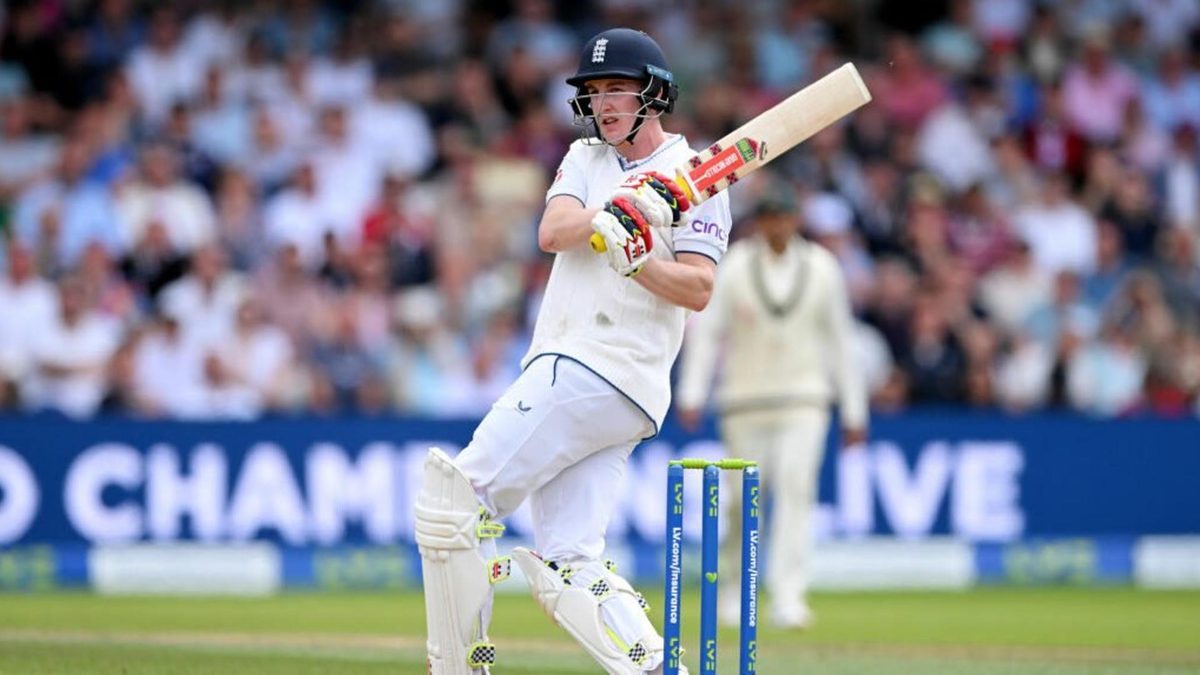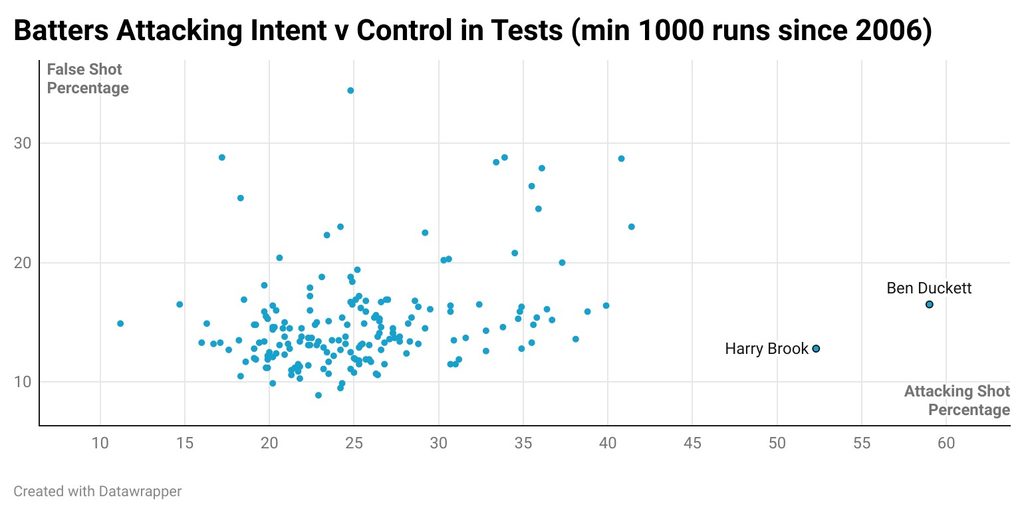
In Ollie Pope’s absence, Harry Brook moved up to three for the first innings at Headingley but was back down at five for the second. CricViz analyst Ben Jones assesses Brook’s suitability to first drop, role he may well fulfil again later in the series.
You can bet on the 2023 Ashes with our Match Centre partners, bet365.

It’s hard not to compare the two. Headingley. Ashes. Day 4 chase. Western Terrace. A Northerner dragging England to a series-saving victory, jeopardy never far away or in short supply. Hopefully someone has checked the bin in the Aussie dressing room.
Of course, Harry Brook’s knock may not compare to his captain’s effort here four years ago, but the context is rather different. The 24-year-old is less than a year into his Test career, and Leeds was only his fifth appearance in England. The challenges of playing at home in these conditions, and at the very top level, are ones he is still learning. Stokes’ innings may be the stuff of legend, but it increasingly feels like that was his peak; for Brook, today was simply the start.
And what a start it’s been, by the way. The Yorkshire youngster has taken just 1,058 balls to reach 1,000 runs in Test cricket, the fastest to that landmark the game has ever seen. After 17 innings his average, compared to those who have batted as often, is second only to Don Bradman. A quirk of a small sample and some less than testing conditions over the winter, no question, but the early signs are thrilling.
Through an analytical lens, there are some exceptional breakdowns in Brook’s record. He averages over 50 against pace bowling, and over 100 against spin. When the quicks pitch the ball up to him, he averages exactly 200. He averages over 40 against in-swing, out-swing, in-seam and out-seam. There is the occasional sobering intervention – an average of 23 against good length bowling is solid, rather than spectacular – but at this stage it’s hard to identify a clear, substantial weakness in his game.
When presented with a talent this raw, it’s natural to wonder quite where a player could end up. For many this is an internal montage of bat-raises and trophy lifts, and for good reason. But in the case of Brook, what’s just as interesting to wonder is exactly what kind of player he’s going to be.
In its most mundane form, the question of where he should bat – where he will bat, in his final form – is still very open. His early forays into top level cricket have been at No.5, from where he has scored his four Test centuries, before an injury-enforced move up to No.3 this week. It didn’t go well, nicking off to Cummins, unconvincingly. A return down the order coincided with his contribution in the chase, and many will suggest it caused it.
In general, the criticism of Brook’s promotion to No.3 has been less about technique, than tempo. Against a backdrop of team-wide freneticism, it’s easy to miss quite how incredibly attacking Brook has been in Test cricket. His strike rate (94) is comfortably the highest Test cricket has seen, and he’s one of only two players since records began to score 1,000 runs while attacking more than half of the balls bowled to them. The other man is Ben Duckett. England are fun – and people don’t trust that.
There is no question that Brook has an instinctive, clear-minded approach which focuses on boundary hitting. Against spin, his ability to pick up length quickly, and to punish over- or under-pitched deliveries to maximum effect, is the basis of an aggressive but effective method. Averaging 118 against it in Test cricket suggests that his method works rather well indeed.
In the same way that many see BazBall’s success as unsustainable, a run of being dealt the perfect cards at the perfect moment, plenty see Brook’s intent as something close to a waste. This is a man who could, with touch more caution, a dash less dash, be one of the greats. The killer stat to dismiss that criticism, the perfect rebuke, is that with attacking strokes in general Brook averages just under 90, a figure comparable to Steve Smith, Mahela Jayawardene, and other giants of the game. Brook may go harder more often than the rest of the world, but it’s not making him less effective when doing so.
 Harry Brook is in fine company
Harry Brook is in fine company
Yet there is undeniably still something that doesn’t feel right about Brook at No.3, where he will presumably bat once again in Manchester. His record there for Yorkshire – an average of 21 from 14 innings – is a rare spot of mediocrity in his stats. Equally, it’s clear that for many, Brook simply doesn’t look enough like a Test No.3. He is not judicious. He is not calming for the viewer, for the fan at home, or the coach.
However, there is a different way of looking at this. When Ollie Pope – England’s vice captain don’t forget – returns from injury, he is going to come back in at first drop. Root will be No.4. This is not going to be a vacant slot which needs filling for very long. Brook will return to No.5, an expressive strokemaker with room to score fast and play loose. But the long-term project of getting the absolute best version of Brook may benefit from this stint up the order. More exposure to the moving ball, greater opportunity to shape the innings, even the chance to counter against more attacking field settings – these are all things that should, with a fair wind, improve Brook as a batter. A stint at No.3 may just make him a better No.5, and in the long run that’s a very, very good thing.
So without diminishing this series, or giving an undue amount of care and attention, England can almost treat the remainder of this summer as Harry Brook’s gap year; a chance for him to experience new challenges, to grow, to develop in a way you can’t in familiar surroundings. Some people go to Bali. Brook’s gone to No.3.








